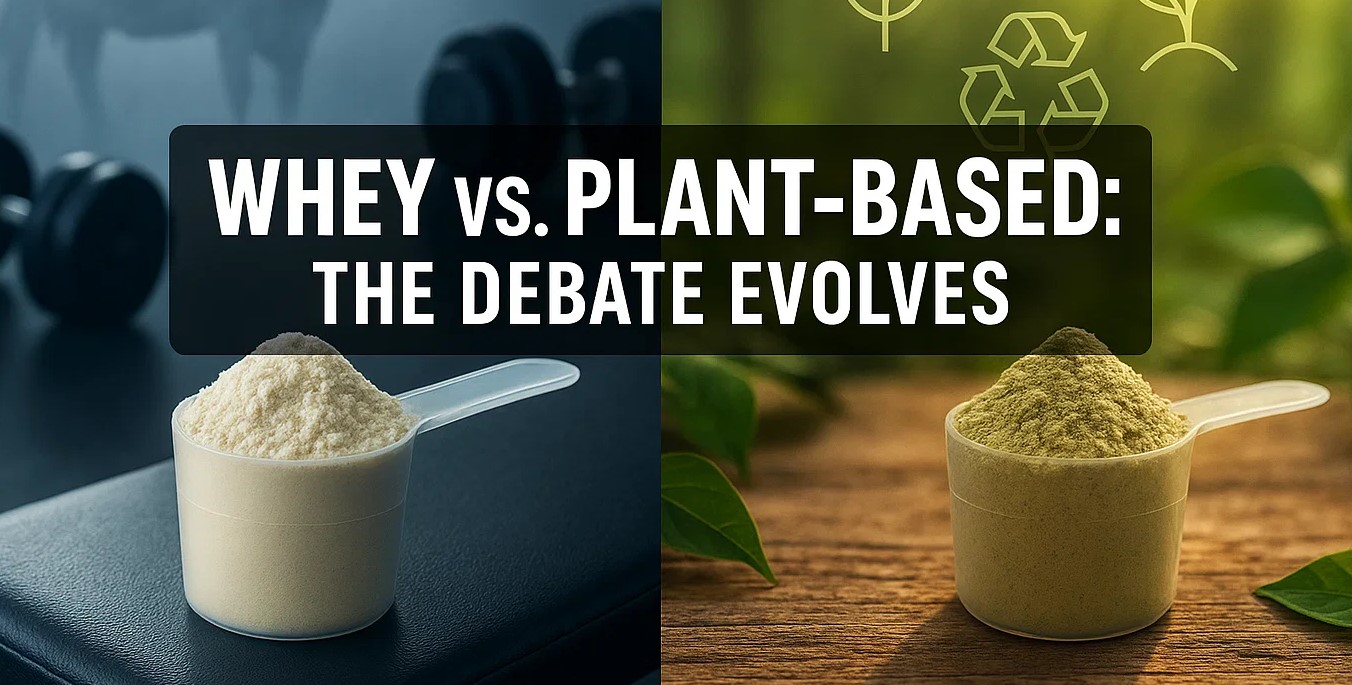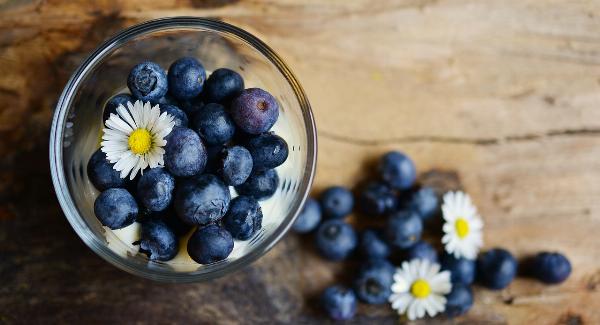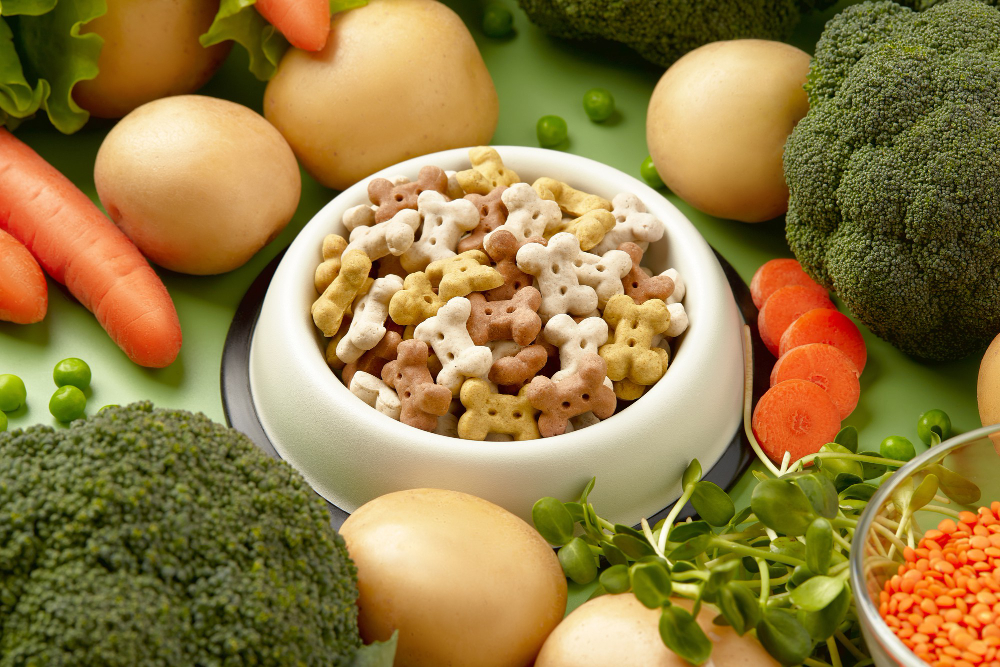Plant Protein vs Whey: The Ultimate Showdown for Clean Gains

Strong 8k brings an ultra-HD IPTV experience to your living room and your pocket.
1. Introduction: The Evolving Protein Landscape
In 2025, the conversation surrounding fitness and nutrition has reached a new level of sophistication. The once-simple, often tribal, debate of whey vs plant protein has evolved far beyond a binary choice. The supplement aisles, both physical and digital, are no longer just a battleground between dairy and plants. Instead, they are the stage for a much more nuanced discussion—one centered on quality, sourcing, transparency, and personalization. The modern, health-aware consumer is asking better questions, and as a result, the industry is slowly being forced to provide better answers.
This shift is fueled by a deeper understanding of our own biology, a growing consciousness about our planet's health, and a collective demand for honesty from the brands we support. The rise of the "label-reader," the consumer who flips the tub over to scrutinize the ingredient list before looking at the marketing claims on the front, has changed the game. The dialogue has matured. This article is designed to navigate this new landscape. It serves as an educational guide to help you understand the science, debunk the myths, and read between the lines, empowering you to make a choice that is not just effective, but truly right for your body and your values.
2. The Roots of the Protein Debate
To appreciate the maturity of today's debate, we must understand its origins. For decades, the protein supplement world was a monarchy ruled by a single king: whey.
Whey's Undisputed Dominance
Born from the world of bodybuilding and strength sports, whey protein became synonymous with muscle growth. As a highly bioavailable and rapidly absorbed byproduct of the cheese-making industry, it was the undisputed gold standard. Fitness magazines, gym culture, and early influencers solidified its position as an essential component of any serious athlete's toolkit. For a long time, there was no real debate because there was no credible alternative with the same scientific backing and market penetration. Whey was not just an option; it was the default.
The Rise of the Plant-Based Contender
Beginning in the mid-2010s, a challenger emerged, born from a confluence of powerful global shifts. The mainstreaming of veganism and plant-forward diets brought ethical considerations about animal agriculture to the forefront. Simultaneously, a growing focus on gut health and food sensitivities highlighted a common issue with whey: lactose. As consumers began linking their digestive discomfort to dairy, they started seeking alternatives. This, combined with rising environmental concerns about the footprint of the dairy industry, created the perfect ecosystem for plant-based nutrition to flourish. What began as a niche product for vegans soon became a mainstream contender for anyone seeking a "cleaner," more sustainable, or gut-friendly option.
3. Whey Protein: Science, Benefits & Misconceptions
Whey protein remains an incredibly effective and popular supplement for sound scientific reasons. Understanding its composition is key to evaluating its role in your diet. Whey is one of two main proteins in milk and is separated during the cheesemaking process. It is then filtered and dried to create the powders we use.
It primarily comes in three forms:
Whey Protein Concentrate (WPC): This is the most common and least processed form. It typically contains 70–80% protein, with the remainder consisting of lactose (milk sugar), fats, and beneficial micronutrients. Its taste and texture are often preferred.
Whey Protein Isolate (WPI): This form undergoes additional filtration to remove most of the lactose and fat. The result is a purer protein, often over 90% by weight. Whey protein isolate is an excellent choice for individuals with lactose sensitivity or those on a very low-carb or low-fat diet.
Whey Protein Hydrolysate (WPH): This form is "pre-digested," meaning the protein chains have been broken down into smaller peptides for the fastest possible absorption. This makes it ideal for elite athletes but comes at a higher cost and often has a more bitter taste.
Benefits and Dispelling Myths
The primary benefit of whey is its complete amino acid profile, which is rich in Branched-Chain Amino Acids (BCAAs)—leucine, isoleucine, and valine. Leucine is a critical trigger for Muscle Protein Synthesis (MPS), the process of rebuilding and repairing muscle tissue. Whey's rapid absorption means these amino acids are delivered to your muscles quickly post-exercise, making it a powerful tool for recovery and arguably the best protein for muscle gain in terms of speed.
However, its long history has led to several persistent myths:
Myth: Whey causes acne. The link is individual, not universal. For some people sensitive to dairy hormones, whey concentrate might exacerbate skin issues. This is often not the case with purer whey isolate, suggesting it's a dairy sensitivity rather than an issue with whey protein itself.
Myth: Whey damages the kidneys. This has been extensively debunked. In individuals with healthy kidney function, a high-protein diet is safe. The concern only applies to those with pre-existing renal conditions.
Myth: Whey protein makes you fat. No single food makes you gain fat. Fat gain is a result of a consistent calorie surplus. Whey protein is a tool to help meet protein goals efficiently; if it contributes to exceeding your daily calorie needs, it can lead to weight gain, just like any other food.
In the Indian context, the digestibility of protein is a major factor. With studies suggesting up to 60-70% of the population has some degree of lactose intolerance, whey concentrate can cause digestive distress. This has fueled the popularity of whey isolate, yet despite this, whey continues to be the most trusted protein source among traditional gym-goers in India due to its long-standing reputation.
4. Plant-Based Protein: Rise, Reasons, Reality
Once a niche product, plant protein has become a formidable force in the supplement market, offering a high-quality alternative that caters to a wide range of needs.
The most common sources include:
Pea Protein: Derived from yellow split peas, it's hypoallergenic, highly digestible, and rich in BCAAs, making it a popular base for blends.
Soy Protein: One of the few plant sources that is a complete protein on its own. Modern soy isolates are highly refined and have been linked to various health benefits.
Brown Rice Protein: A great source of protein that, when combined with pea protein, creates a complete amino acid profile that rivals whey.
Hemp Protein: Offers a good dose of protein along with healthy omega fatty acids and fiber, making it a well-rounded nutritional choice.
Benefits and Solving Limitations
The appeal of vegan protein powder is multifaceted. It's inherently free from lactose, dairy, and cholesterol, making it ideal for vegans and anyone with allergies or sensitivities. The inclusion of natural fiber can support gut health and improve satiety. For many, it simply feels "lighter" and easier to digest.
The historical knock against plant protein was its "incomplete" amino acid profile. While a single plant source might be low in one or more essential amino acids, modern supplement science has completely overcome this. By creating intelligent blends—for example, combining pea protein (high in lysine) with brown rice protein (high in methionine)—manufacturers can offer a robust, complete amino acid profile that is functionally identical to whey for building and repairing muscle. This innovation has leveled the playing field, making plant-based protein a scientifically sound choice for athletes and fitness enthusiasts.
5. Comparison Table: Whey vs. Plant-Based Protein
To summarize the key differences, here is a straightforward protein powder comparison:
| Attribute | Whey Protein | Plant-Based Protein |
| Source | Dairy (milk) | Pea, soy, hemp, rice |
| Absorption Rate | Fast | Moderate |
| Amino Profile | Complete | Often needs blending |
| Digestibility | Excellent (unless lactose-sensitive) | Excellent |
| Allergens | Contains lactose | Hypoallergenic |
| Taste & Texture | Smooth, creamy | Earthy, gritty |
| Cost | Medium to high | Varies |
| Environmental Impact | High | Low |
6. Environmental Impact: Clean Gains vs. Green Gains
In 2025, the choice of a supplement is no longer just a personal health decision; it's an environmental one. The dairy vs vegan protein debate has a clear winner when viewed through the lens of sustainability.
Whey protein is a byproduct of the dairy industry, which is notoriously resource-intensive. Animal agriculture is a leading contributor to greenhouse gas emissions, requires vast amounts of land for grazing and feed cultivation, and has a significant water footprint.
In contrast, plant-based proteins are far more eco-friendly:
Carbon Footprint: The carbon emissions from producing a kilogram of protein from peas or soy are a fraction of those from dairy.
Water Usage: The water required to grow legumes like peas is significantly less than the water needed to sustain a dairy cow and process its milk.
Land Use: Far less land is required to produce an equivalent amount of protein from plants. Furthermore, crops like peas are nitrogen-fixing, meaning they naturally enrich the soil, reducing the need for chemical fertilizers.
For the environmentally conscious consumer, the choice is compelling. Opting for a plant-based protein allows you to fuel your body effectively while significantly reducing your ecological footprint. It's the difference between focusing solely on "clean gains" for your body and embracing "green gains" for the planet.
7. Label Literacy: What the Industry Doesn't Want You to Read
The single most powerful tool a consumer has in 2025 is the ability to read and understand a supplement label. The front of the tub is marketing; the back is the truth. Adopting a "Label Padhega India" mindset—a commitment to checking ingredients before you buy—is crucial for navigating the world of fitness supplements in India.
Here are the red flags to watch for during supplement label reading:
Proprietary Blends: If you see terms like "Performance Matrix" or "Muscle Blend" without the exact amount of each ingredient listed, put the tub back. This is a tactic used to hide low doses of key ingredients and stuff the formula with cheaper fillers.
Artificial Sweeteners & Hidden Sugars: Look out for sucralose, aspartame, and acesulfame potassium (ACE-K). While approved for consumption, many people prefer to avoid them. Also, scan for hidden sugars like maltodextrin, a cheap carbohydrate that can spike blood sugar and add empty calories.
E-Numbers and Thickeners: A long list of gums (xanthan, guar), anti-caking agents, and artificial flavors indicates a highly processed product. While some are necessary for mixability, a simple, short ingredient list is a sign of a higher-quality formulation.
Protein Spiking: Though less common with reputable brands, this is the practice of adding cheap amino acids like glycine or taurine to the formula. These show up as "protein" in basic lab tests, artificially inflating the protein number on the label while providing less of the muscle-building essential amino acids. Full transparency is the only defense.
8. Clean Label & Consumer Trust
In response to consumer demand for honesty, the "clean label supplements" movement has gained tremendous momentum. A clean label is more than just a marketing term; it's a philosophy of transparency and simplicity.
Key features of a clean label product include:
Full Transparency: No proprietary blends. Every ingredient and its exact dosage is clearly listed.
Minimal Ingredients: The formula avoids unnecessary fillers, artificial colors, flavors, and sweeteners. The ingredient list is short and understandable.
Sourcing Information: The best brands are open about where their ingredients come from (e.g., whey from grass-fed cows, organic plant sources).
Third-Party Testing: Reputable brands voluntarily send their products to independent labs to verify protein content and test for heavy metals, pesticides, and other contaminants.
This trend towards transparent supplements is a direct result of an educated consumer base that is no longer willing to accept secrecy. Consumers are voting with their wallets for brands that are open, honest, and can back up their claims with proof.
9. Indian Market Trends in 2025
The Indian consumer's journey has been remarkable. The market has rapidly moved past the initial phase of hype, where imported brands and aggressive marketing reigned supreme. In 2025, Indian consumers are among the most discerning in the world.
The shift is clear:
From Hype to Education: The influence of "gym bros" is being replaced by qualified nutritionists, scientific literature, and a culture of self-research.
Digestibility as a Priority: Given the high rates of lactose intolerance, there is a massive demand for supplements that are gentle on the stomach. This has fueled the growth of both whey isolate and the entire plant-based protein category.
Demand for Trust: After years of navigating a market with counterfeit and low-quality products, Indian consumers place an extremely high value on transparency, third-party testing, and clean labels. The "Label Padhega India" movement is a testament to this.
Rise of Ethical Considerations: A growing segment of the market is making choices based not just on performance, but also on environmental impact and ethical sourcing, further boosting the appeal of plant-based options.
10. Final Verdict: It's No Longer Whey vs Plant — It's Personal
So, who wins the great debate? The answer is: you do.
There is no universal "best" protein powder. The most effective, healthy, and sustainable choice is deeply personal. Both whey and plant-based proteins are excellent tools when used correctly. The right question is not "Which is better?" but "Which is better for me?"
To find your answer, you must become an expert on yourself. Assess your:
Digestion: How does your body handle dairy? Do you feel bloated and gassy, or light and energized?
Fitness Goals: Are you an elite athlete needing the fastest recovery, or are you looking for a convenient way to increase your daily protein intake?
Lifestyle and Ethics: Do your dietary preferences (e.g., veganism) or environmental concerns guide your choices?
Health Status: Consider consulting a doctor and getting blood work done to check for any underlying sensitivities or allergies.
The era of choosing a protein powder based on brand loyalty or gym tradition is over. The new era is about personalized, informed wellness.
Stop blindly buying what's popular.
Start reading the label and understanding the ingredients.
Choose the protein that aligns with your unique body, your goals, and your beliefs.
Frequently Asked Questions (FAQ)
1. Which is better: whey or plant-based protein? Neither is universally better. Whey protein is excellent for rapid absorption and has a high BCAA content, making it ideal for post-workout recovery if you tolerate dairy well. Plant-based protein is a fantastic, hypoallergenic, and sustainable option that, when blended, provides a complete amino acid profile equally effective for muscle growth. The best one is the one that fits your digestive system, lifestyle, and values.
2. Can plant-based protein build muscle like whey? Yes, absolutely. The ability to build muscle depends on consuming enough protein with a complete profile of all nine essential amino acids. High-quality blended plant proteins (like pea and rice) provide this complete profile and have been shown in studies to be just as effective as whey for promoting muscle gain when consumed in adequate amounts.
3. Is whey safe for lactose-intolerant people? Whey concentrate is high in lactose and will likely cause issues. However, whey protein isolate is filtered to remove most of the lactose, and many people with intolerance can consume it without problems. For those with a severe intolerance or a true milk allergy, a plant-based protein is the safest choice.
4. How do I read supplement labels effectively? Focus on the ingredient list and the nutrition facts panel. Look for a short, understandable ingredient list. Calculate the protein percentage (grams of protein ÷ serving size in grams). Avoid products with "proprietary blends," and be wary of long lists of artificial sweeteners and fillers.
5. What's a clean-label supplement? A clean-label supplement is one that prioritizes transparency and simplicity. It features a fully disclosed ingredient list with no hidden blends, uses minimal and recognizable ingredients, and avoids artificial colors, flavors, and unnecessary additives. Often, these products are also third-party tested for purity and potency.
6. Is plant protein always more sustainable? Generally, yes. The production of protein from plant sources like peas, soy, and rice has a significantly lower carbon, water, and land footprint compared to dairy-based whey protein. While farming practices vary, on a large scale, plant-based is the more environmentally friendly option.
7. Should I alternate between whey and plant? Alternating can be a great strategy. This approach, known as protein rotation, can diversify your nutrient intake and may help prevent the development of food sensitivities from over-exposure to a single protein source. It allows you to get the benefits of both whey's rapid absorption and the fiber and micronutrients from plant proteins.
Note: IndiBlogHub features both user-submitted and editorial content. We do not verify third-party contributions. Read our Disclaimer and Privacy Policyfor details.







